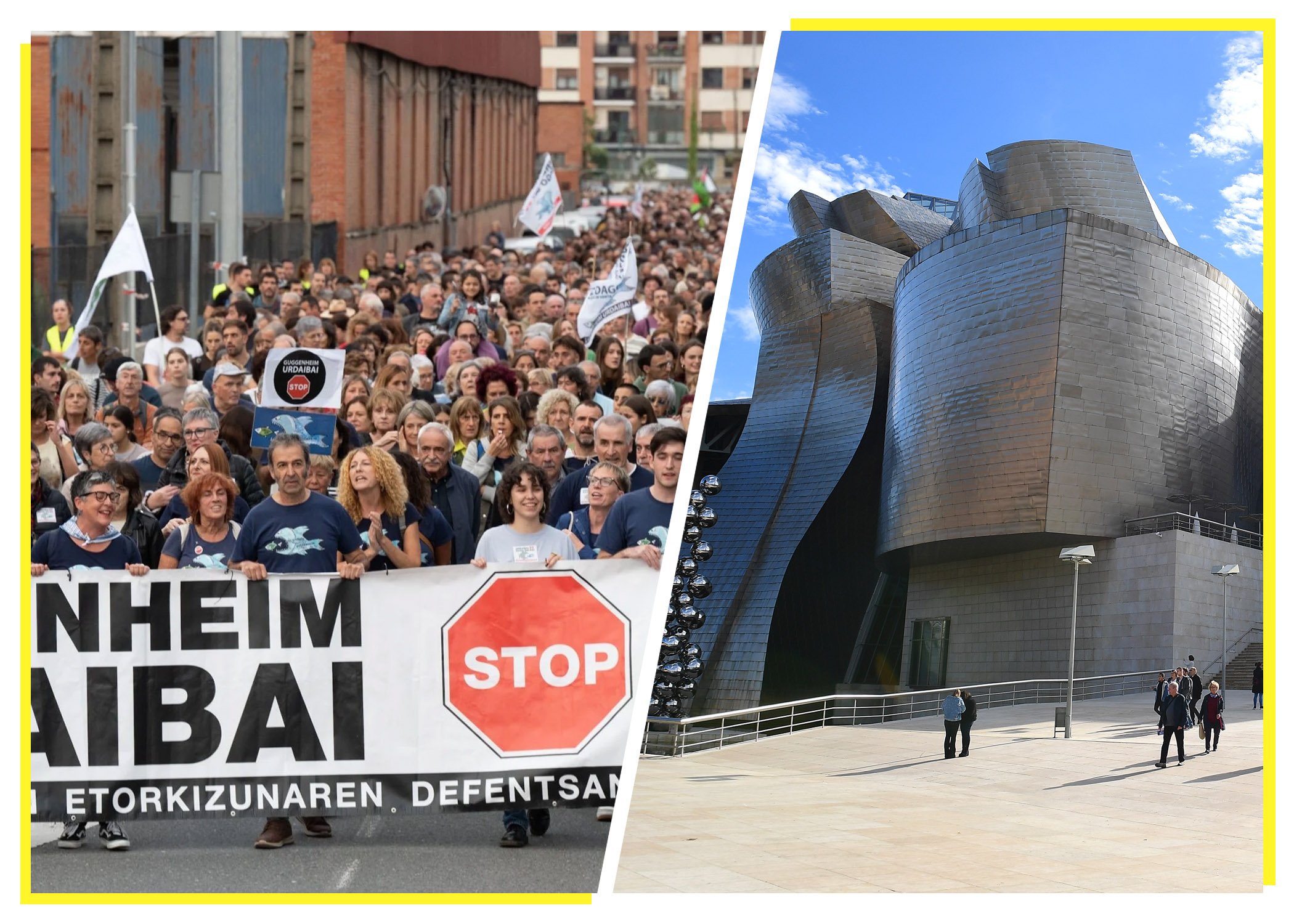
The Guggenheim Museum was, under the leadership of the legendary Thomas Krens, among the first to realize ambitious plans to expand with worldwide outposts. The institution’s Frank Gehry-designed Bilbao venue revitalized a run-down post-industrial part of Spain to such a degree that it inspired the term “the Bilbao effect.” The institution seeks to extend its reach ever further, to mixed results: a controversial Guggenheim Abu Dhabi is slated to open in 2026; a project for Helsinki was put on ice in 2016 when the Finnish government cut the project from its budget.
But a further expansion about 25 miles northeast of the Bilbao venue is being met with outrage by preservationists.
Ever since 2008, the museum has expressed an interest in expanding with a nearly 54,000-square-foot facility in the neighboring Urdaibai, which UNESCO designated a biosphere reserve in 1984. The estuary covers about 85 square miles and is home to about 45,000 inhabitants, mostly in the towns of Bermeo and Gernika. According to UNESCO, the area is home to several hundred plant and animal species; it also contains remnants of prehistoric, Roman, and medieval history.
Urdaibai Biosphere Reserve in Gautegiz Arteaga in Vizcaya, Basque Country, Spain. Photo: Cristina Arias/Cover/Getty Images.
In a statement sent to Artnet News that is rich with lists if short on specifics, the museum describes “a project intimately aligned with its surroundings where art, culture, and nature converge; an initiative which underscores the constant collaboration between human beings and the environment, and where active dialogues between the landscape and artistic creation find a coherent, unique expression.” The project will “integrate artistic production, ecology and technology, social connectivity and research,” and be “committed to the environment and to the future of the region in all its cultural, economic, social, and environmental dimensions.”
Two factoids that are included: one, the museum anticipates just 150,000 visitors per year, which it says will spare the ecosystem from “the negative impacts of mass tourism.” Two, Gernika will serve as the access point; private vehicles won’t be allowed beyond there, with visitors proceeding on foot, by bicycle, by train, or via electric shuttle.
Dozens of people during a demonstration against the construction of the Guggenheim Urdaibai museum, October 19, 2024 in Gernika-Lumo, Biscay, Basque Country, Spain. Photo: David de Haro/Europa Press via Getty Images.
Not everyone is convinced of the sustainability that the museum touts. Greenpeace goes so far as to say that the project is illegal because it is sited in an area dubbed part of the Natura 2000 Network that is subject to special protections. The “vulnerable area” would suffer from those 150,000 visitors, in Greenpeace’s view. The organization filed a dispute with the national courts in May.
“We call for the immediate suspension of this project,” said Lorea Flores, spokesperson for Greenpeace in the Basque Country, in press materials. “The local population needs a development strategy aligned with the wonderful natural environment of Urdaibai and a culture for all but without destroying nature. You cannot bet on projects that respond to private interests, but paid for with a public budget, without citizen participation and that are detrimental to them, as is the case.”
In 2022, the provincial council of the Biscay province, of which Bilbao is the capital, planned to spend some €40 million (about $43 million) on the museum’s expansion, with more public funds to come, Deia reported at the time, saying that a former cutlery factory, a shipyard, and two new buildings could house the new museum. The budget for the proposed expansion was reported to be about €127 million ($137 million). According to El Correo, a tunnel would link Bilbao with the new facility.
The World Wildlife Federation issued a call (co-signed by Greenpeace, Friends of the Earth, Ecologists in Action and SEO/Birdlife) in June for the project to be scrapped, arguing that it allows the Guggenheim to “expand its business” at no cost, while at the same time requiring the local Ministry of Ecological Transition and Demographic Challenge to clean up soil pollution generated by the shipyards.
“This could wreck the whole area,” Diego Ortuzar, a spokesperson for Ecologists in Action Bizkaia, told the Guardian. “If the Guggenheim is built then the biosphere reserve will basically disappear. The area will cease to function as a protected natural area and will become something else: there will be roads and cars and hotels.”
Juan Ignacio Vidarte, the director-general of the Guggenheim Bilbao, suggested to the Guardian that the opposition is premature since there are no definite plans, and said that some locals were looking to play politics with the project.
“According to the development figures, this area is the second most depressed part of the Basque Country—and there’s a logic to that,” he said. “A lot of economic activities aren’t compatible with [Urdaibai’s] status as a natural reserve… We think a certain kind of tourism—but not just any kind of tourism—is compatible and we think the project we’re proposing has taken that very much into account.”